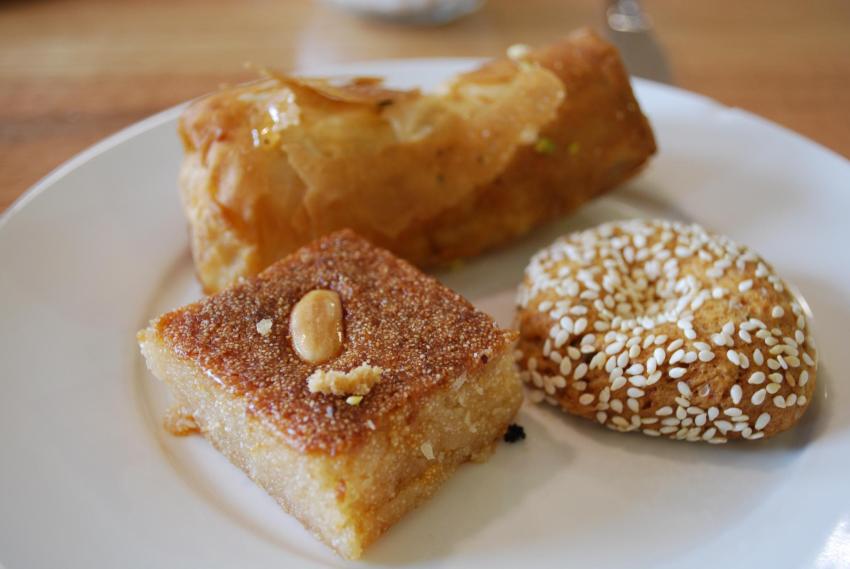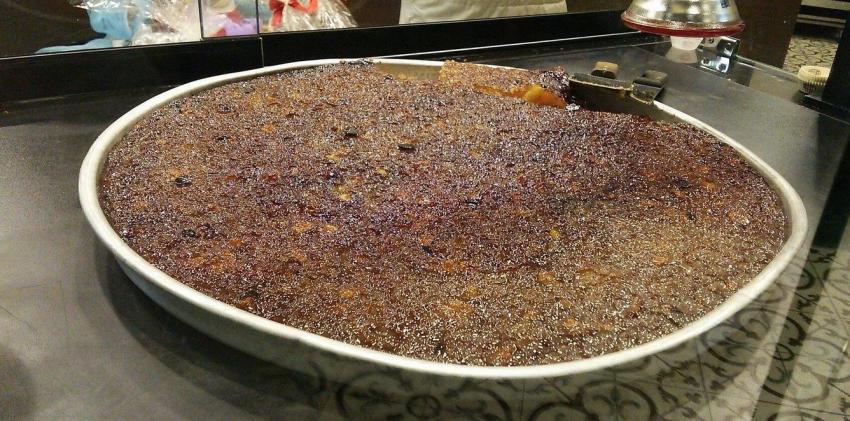- Read offline
- Access all content
- Build a list of your own favourites
- Search the contents with full-text search functionality
- ... and more!
halvá
χαλβάς
There are three kinds of halvá(a word that ultimately comes from the Arabic word for ‘sweet’, although the recipe comes from Persia). There's the tahini-based confectionary, popular throughout the Balkans, Middle East and South Asia. It comes in different flavours, including pistachio, walnut and marbled chocolate and vanilla. Because it’s made without any dairy or eggs, it’s one of the few sweet things allowed to believers during Lent.

Greek (or semolina) halvá is an oil, semolina, sugar or honey and water pudding or cake drenched in syrup, often including nuts, and flavoured with cinnamon and cloves–the perfect vegan dessert, and equally okay during Lent.

A third kind, halvá sapouné ‘soapy halva’ is a speciality of Thessaly and in particular the Patisserie Rombos in Kalambáka, the town built under the surreal monastery-topped monoliths of Meteora. It’s made with goat (or sheep) milk butter, sugar, corn flour and water and has a rich, soft but firm base with a slightly smoky caramelized crust. It’s the perfect reward for climbing up to all those monasteries!
Images by Alpha, Dana Facaros, San yen

